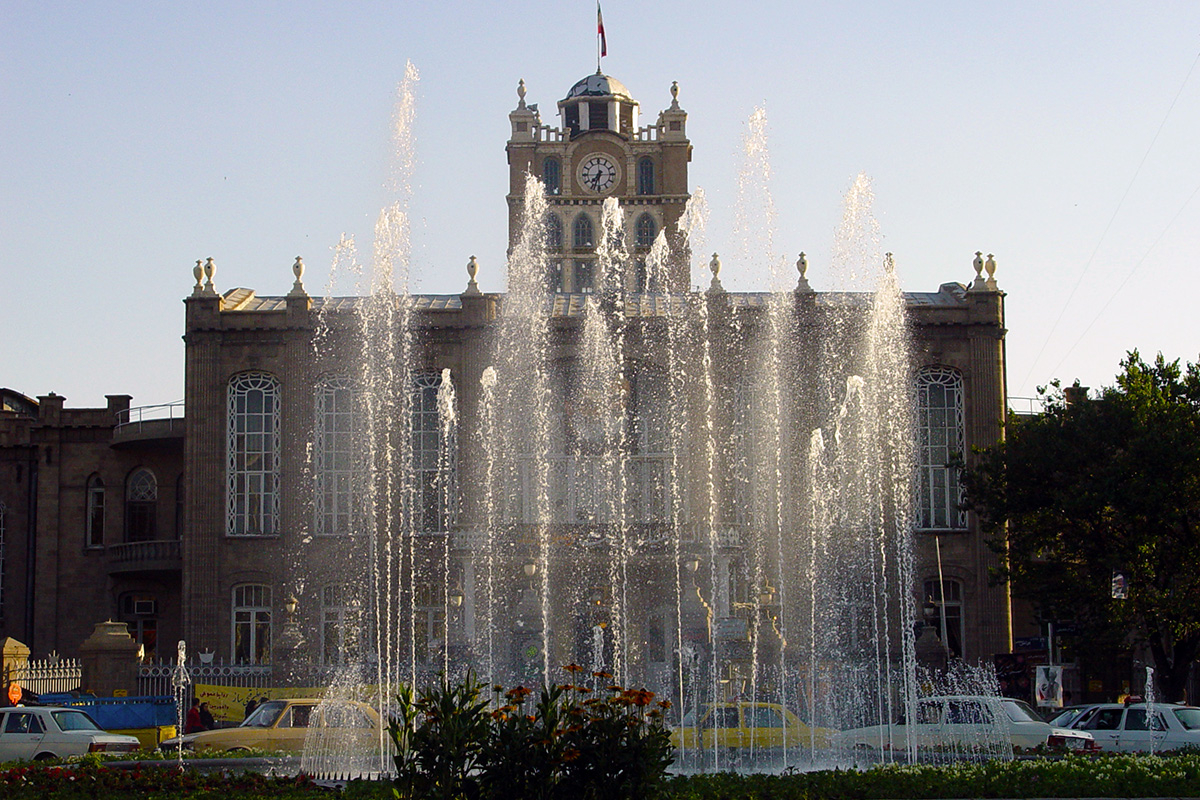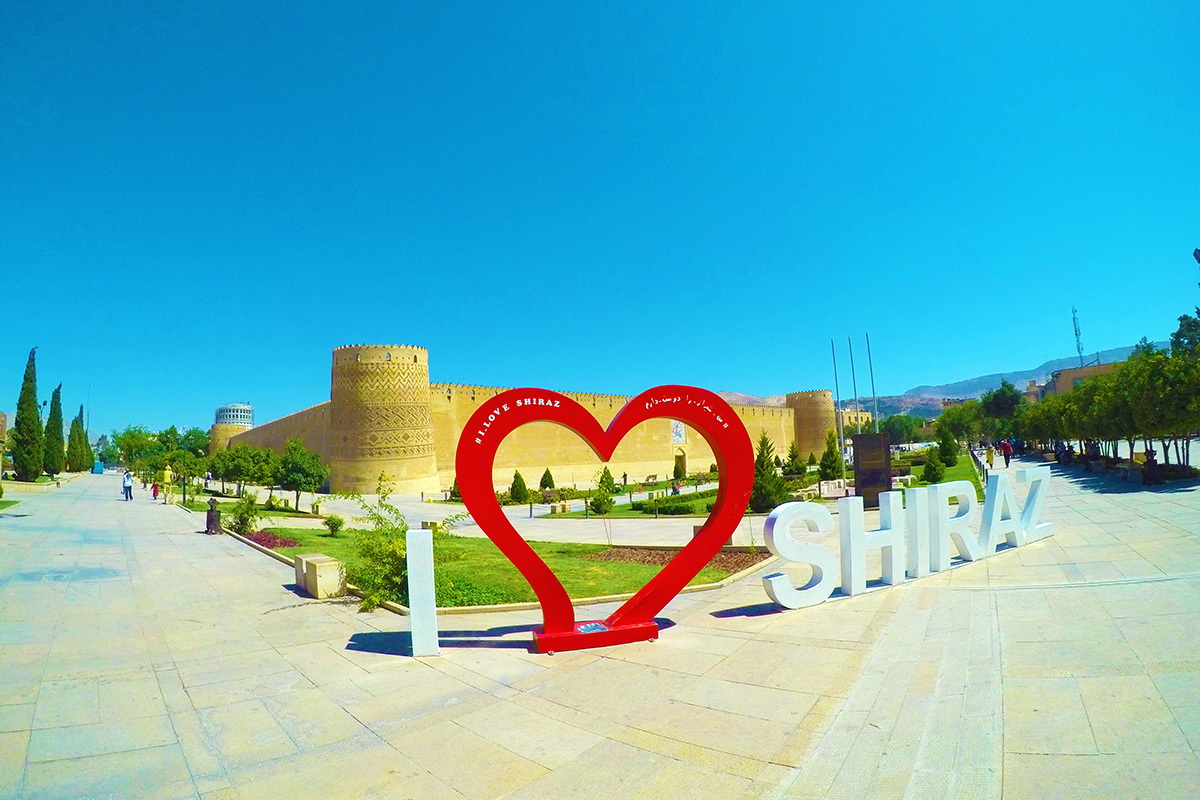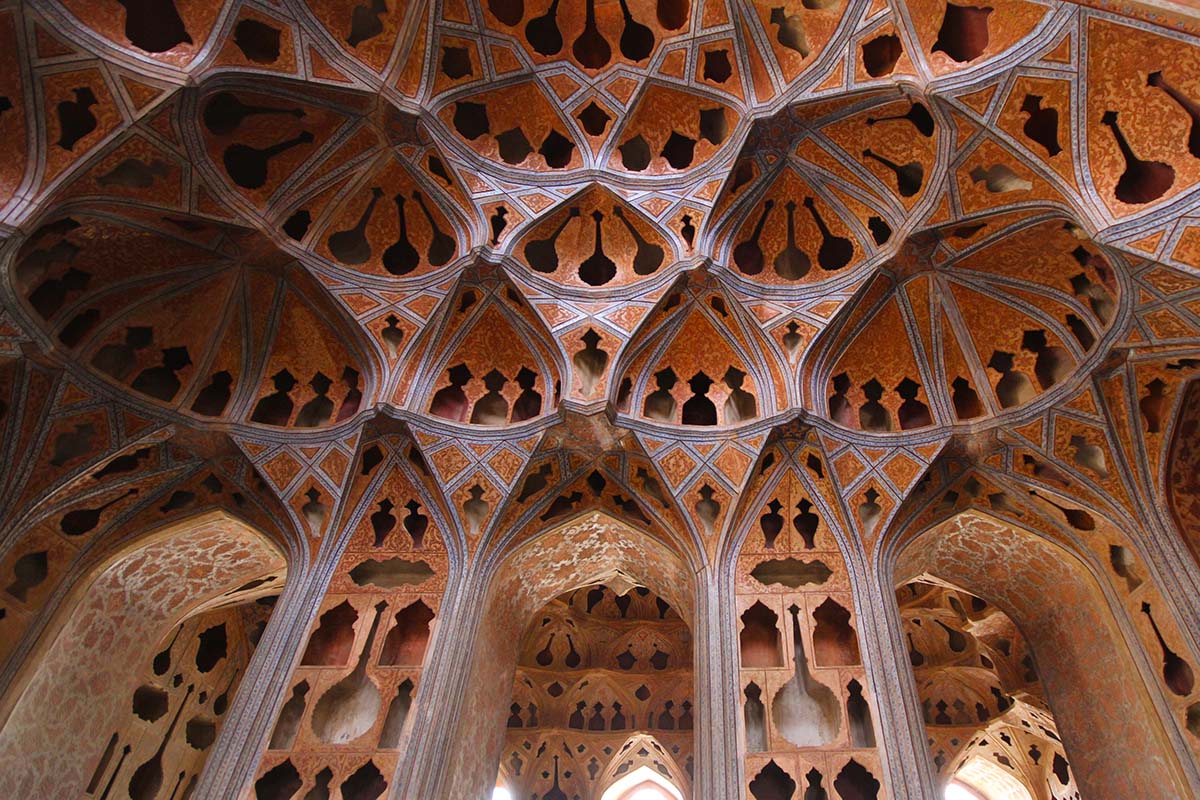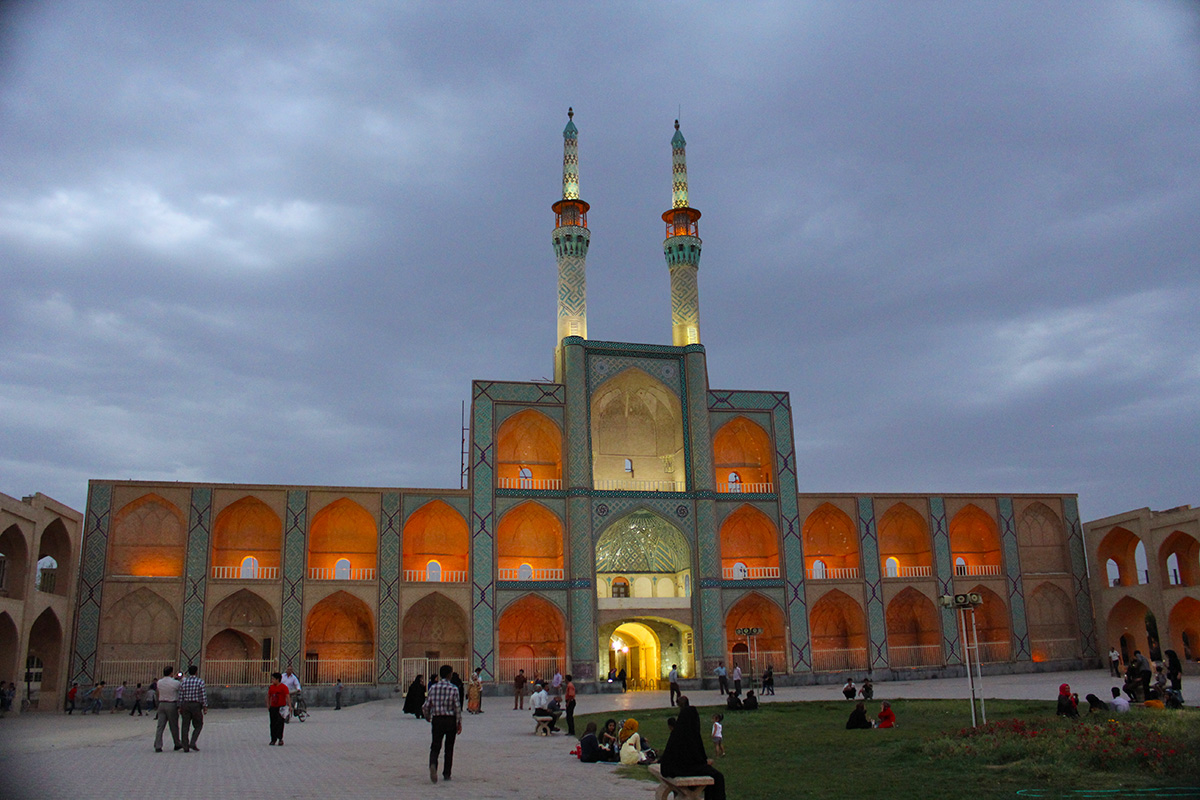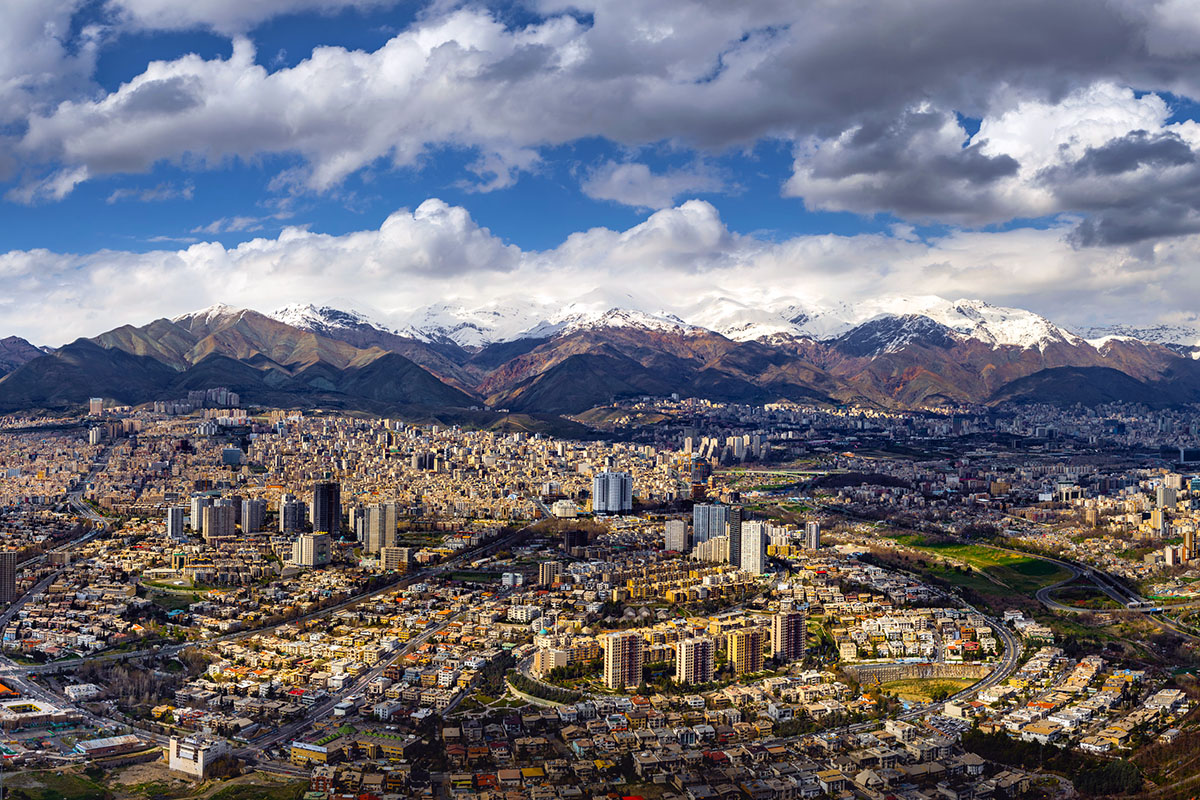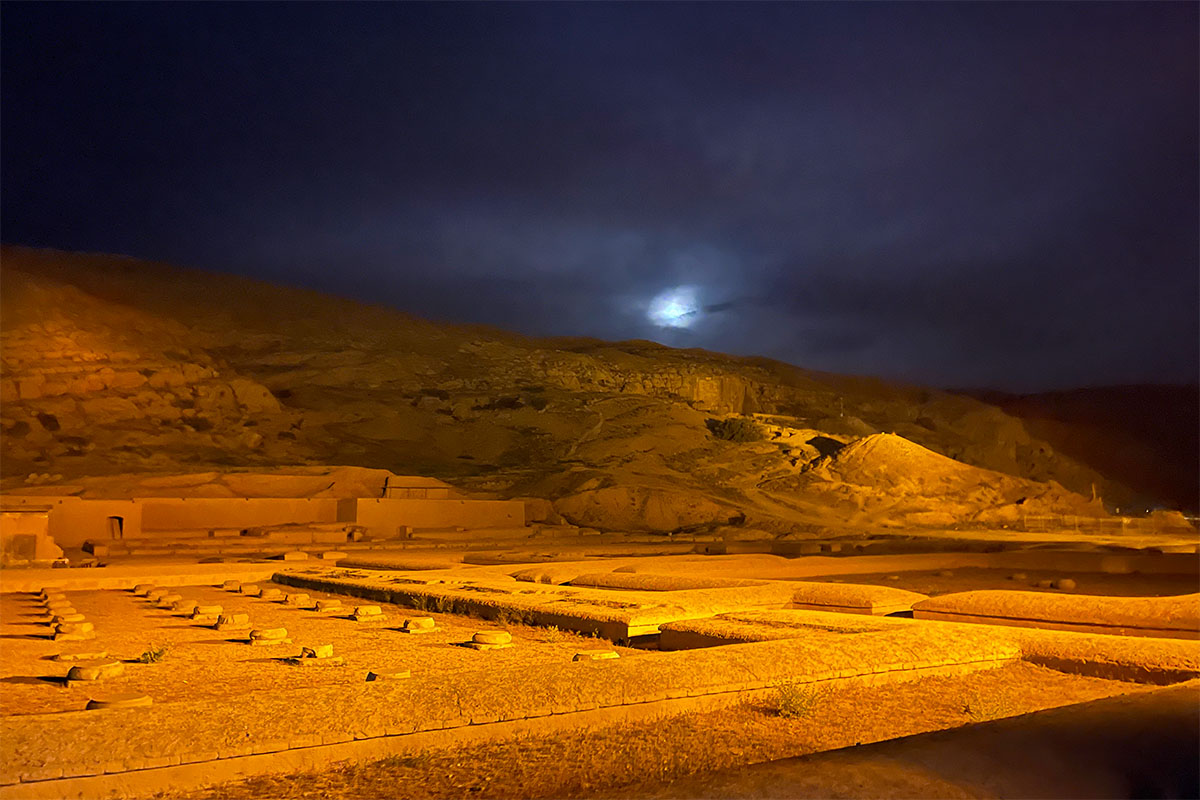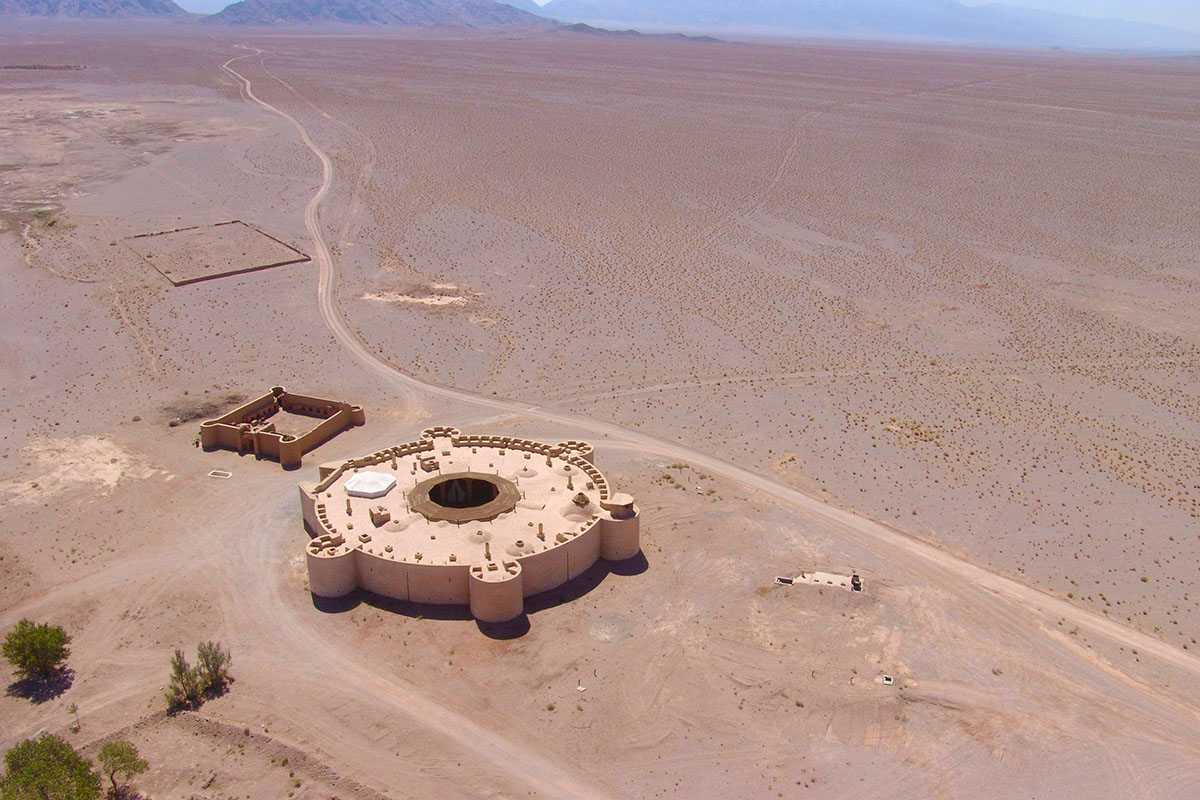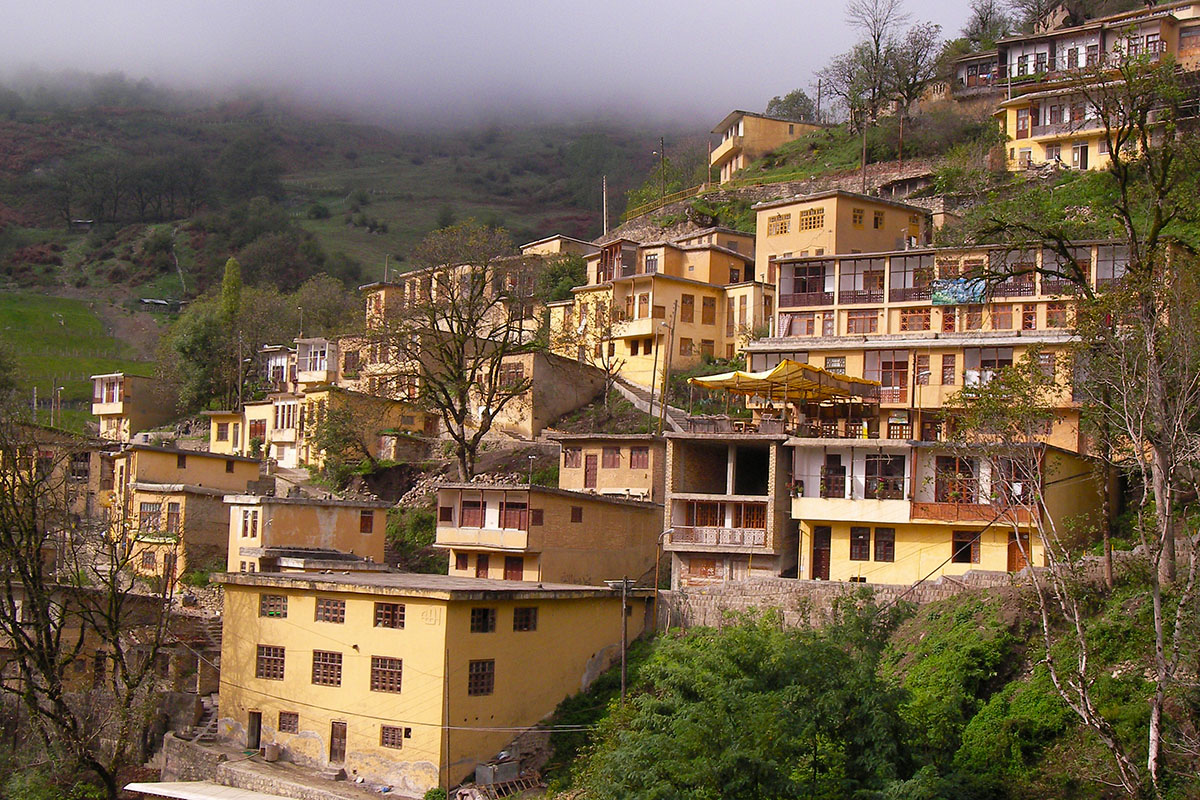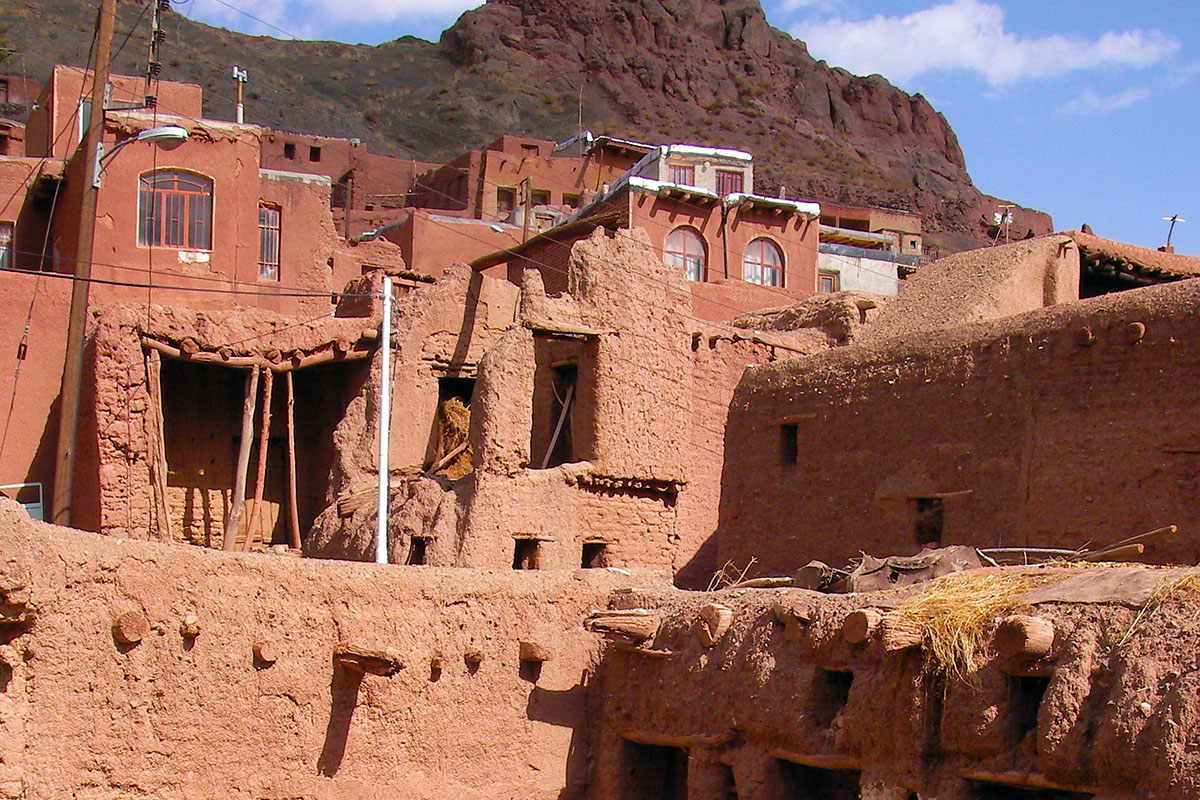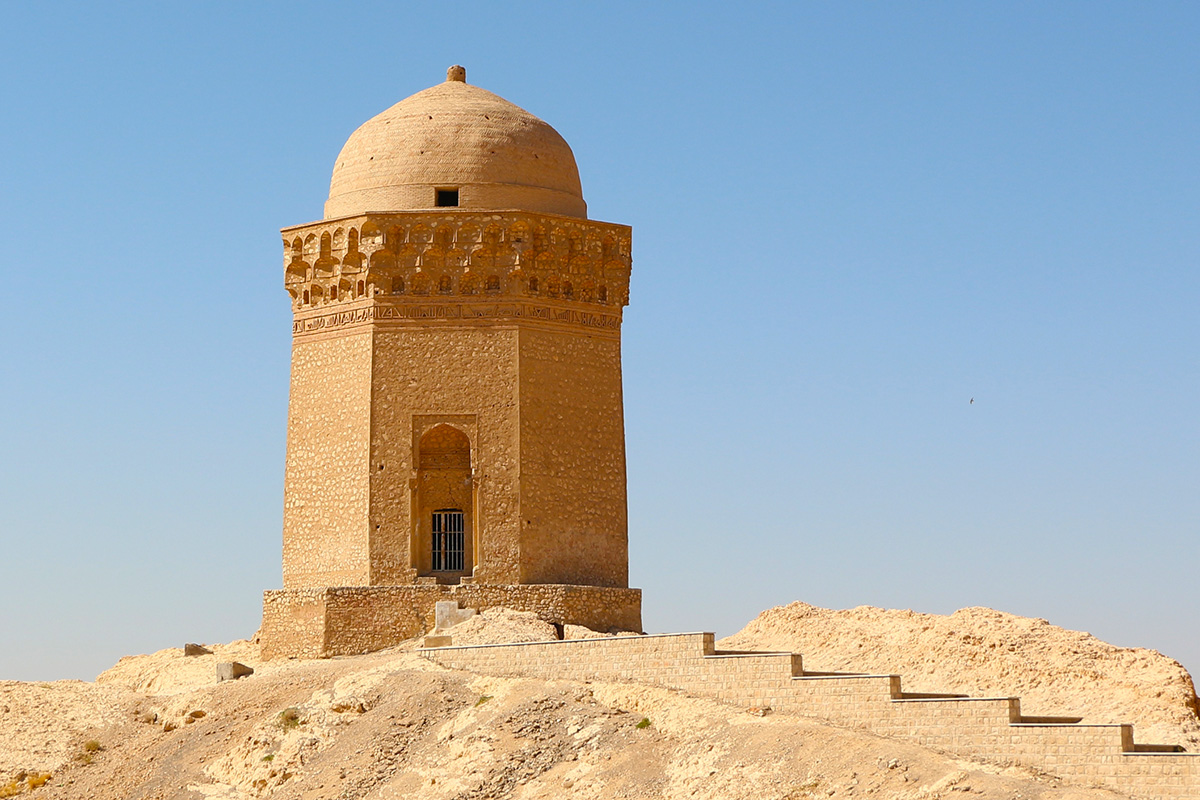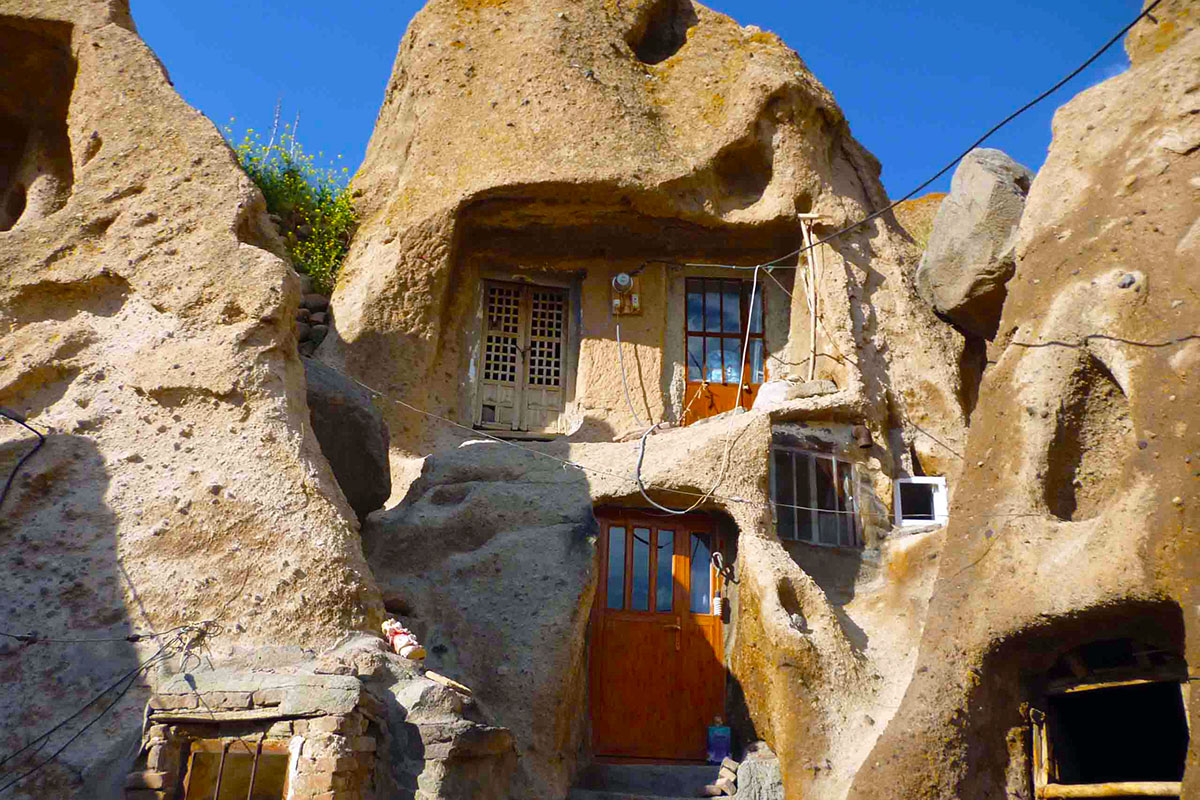Location
Tabriz is located on northwest of Iran. On the north it’s bordered on “Eynali” mountains and on the south it is surrounded by the hillsides (of volcanic mountains) of “Sahand”.
Language
Azerbaijan language is similar to Turkish. Although the inhabitants specially the younger ones can speak Farsi as well, their dialect is Turkish-Azari. Azari is a language belonging to the Turkic language family, which is spoken mainly in Azerbaijan, Iran. Before Turkish Language enters this district, people spoke in Azari Language and it was common among people up to 11th century.
Religion
Majority of the population in Tabriz are Muslim and followers of Twelver Shi'a. Although there are other religious cult lives in Tabriz including Armenian Christian, Zoroastrian and Jewish.
Climate
Climatically speaking in Tabriz you will experience tough and freezing cold winters, but in summer when is a great period of time for visiting the city, the weather is fair and lovely. The annual precipitation is around 380 mm. Tabriz climate is dry throughout the year and it has a continental climate with low humidity.
History
The early history of Tabriz is almost lost and forgotten. But from what we know, Tabriz like the most cities of Iran grows from ancient roots.it's name most likely is first referred through Assyrian King Sargon II’s epigraph in 714BC by the names of “Tarui” or “Taruies”. A new discovery within the iron age museum suggest a 3000 year history, although the city must had been built and destroyed a lot of times during it's vast history. The city was damaged and destroyed several times by natural disasters like fatal earthquakes or wars. Shared borders with Ottoman Empire caused city a great deal of trouble; such that the threats and chaos finally made “TahmasbShah” (the king) to move the capital from Tabriz to Tehran.
In more recently history, Tabriz had been the capital of the Azerbaijan province for a truly long period and capital of the country a few times. During Qajar dynasty, the city was home residence to the crown prince. Later Tabriz was hugely involved in the Iranian constitution revolution through national heroes such as “Sattar Khan” and “Bagher khan”. The prime years of the city Tabriz, came upon the Ilkhanate dynasty, when it was appointed the capital of a huge empire filling the land territory between the Nile to the Middle Asia. The city has given shape to a lot of social, cultural and industrial changes in the country over the last 2 decades and has performed a vital role in key events such as Iranian Constitutional Revolution, The Islamic Revolution in 1978 and also modernizing the today Iran. When the Constitution Movement leaders were shut down by Mohammad Ali Shah of Qajar dynasty, Tehran was left mute, but in Tabriz and only in a few of her districts did The Movement. Followers sacrifice everything even their lives to protect the achievement.
The city is economically and politically highly valuable through certain geographical and natural conditions. The emergence of ancient civilizations such as the one of The Medes and The Saans thousands of years BC is considered a proof. The opening of the Silk Road through the city has made privileged economy and cultural advances and the political, economic and cultural communications have brought changes in culture, civility and custom over the residents of these lands and also have made preparations of the making of a lot of scientific and ideological breakthroughs in institutes and other civil organizations over the country and have graced the name of Tabriz through the eyes of a nation as a "City of Firsts". The first school, library, hospital, magazine, theater, municipality ET. Were established in this city.
- The first printing press establishing in Iran, was at 1227 in Tabriz by the prince Abbas Mirza. A while after that the second printing press established in Tehran.
- The first public cinema by the name of “Soli (Sun) established in 1279, five years after the world wide invention of Cinema by Lumière brothers”,
- The first school which was established
Economy
Tabriz plays a significant role in Iran’s economy. Industries include the manufacturing of automobiles, petrochemical materials, electrical equipment, refinery, home appliances, textiles and leather, cement, and chemical products. The city has long been an important Middle East Tractor Manufacturing center. Iran Tractor Manufacturing Co (ITMCO) is one of the biggest industrial complexes in the region. In addition to its manufacturing base, Tabriz economy has diversified into a full range of service activities, particularly tourism.
Attractions
Blue Mosque
Blue mosque or Jahanshah’s Mosque is one of the unique structures in Iran which has an eyeful of breathtaking architecture and color. Vibrant sky-blue color of the mosque would attract everybody’s attention. According to the Blue Mosque Inscription, the monument Construction’s going back to the ninth century. It was built during the reign of kara koyunlu ruler, Jahanshah. The mosque was severely damaged in an earthquake in 1779, leaving only one “Iwan”. After two decades, in 1973, its reconstruction began and apart from the tiling which is still incomplete, most of the mosque has now nearly got back to its original state. The 15th century Blue Mosque was described by Lonely Planet as "among the most glorious buildings of its era."
Clock Tower
Clock tower, also known as Tabriz Municipality Palace probably is the most important monument of Tabriz city. Main Iranian city had a town hall and Tabriz wasn't an exception. however many of them have lost their main function and serve as an attraction for tourists inside of the building is a museum which is sorted to some parts like: Sound, photography, carpet and after World War II it was used by the Azerbaijan Democrat Party as a Government Office. When Iranian troops regained control of Tabriz in 1947, the building was again used as the Tabriz municipal central offices. Since Saat Tower is located in the center of the city, it has been used for various ceremonies and gatherings in the city. During 1947 it was used as the seat of the Azerbaijan Peoples' Government. The construction works of this building started on 1934 and finished on 1938 by supervising Deutsch engineers and order of King Reza Pahlavi In recent years parts of the building are decorated in function of museum. The museum includes historical maps and photos of Tabriz. There are also some antiques like first taxi cars, old firefighting tracks are shown in the museum.
The Bazaar of Tabriz
Tabriz Bazaar is considered as one of the biggest covered markets in Iran and Asia. It was registered as the first market in the world in UNESCO World Heritage Site. It includes several smaller markets and caravansaries. Previously, due to the exposure of Tabriz to the crossroad of the Silk Road, thousands of caravansaries from different countries of Asia, Europe and Africa passed this city, so its bazaar had a booming economic situation. This bazaar was restored by Tabriz ruler about 3 centuries ago after a great earthquake. The exact date of its construction is unknown, but most tourists who visited this bazaar from14th century to Qajar Period, offered some information about it. The core of the city of Tabriz is located in a quadrilateral and bazaar is located in its center. This bazaar is confined to Alighapoo (price’s palace) from the east and to Jame Mosque from the west. It includes some parts of Mehran River. These two parts are connected by wooden bridge. During the second half of 13th century, the British businessman transferred their goods to this bazaar after passing Istanbul and Trabzon via Silk Road, and this bazaar turned to the center of British commercial center. This Bazaar is the main center of exchange of Tabriz people by having 5500 shops , rooms and stores, 40 types of job, 35 Sara, 25 Timche, 20 mosques, 20 job series, 9 religious schools. This renowned structure is one of the finest examples of the traditional commercial and cultural system of Iran.
Quran and Ketabat museum
In this museum there is a collection of precious manuscripts of the holy Quran in various periods of history and beautiful pieces of the works of famous calligraphers have been shown. One of the most notable work in this museum is the clothes figured by Quran verses, the smallest manuscript Quran in gold, healing cup and stone inscription. In this museum, some versions of Quran have been displayed which are written by Imams and famous calligraphers. Among these valuable works, we can imply to one page of Quran related to Imam Reza’s handwriting, made on a piece of animal skin. Among the 2200 works related to Quran, 190 works are displayed in Quran museum and the rest of that is kept in Azerbaijan Museum Storage.
Jome Mosque
Jome mosque is located in Tabriz. It is surrounded by Tabriz Bazzar. The location of mosque is in Motahari St. This mosque dates back to Qajar and Seljuk Dynasty. During the Mogul Dynasty, attentions were made to this building and it was repaired. The oldest part of that is the vast chamber composed of vaults and domes covered with delicate plasterworks. During the earthquake of 1193 Hejri, like every other buildings, this mosque was severely damaged. The present mosque was constructed by the ruler of Tabriz (Hossein Qoli Khan Danbali) in the beginning of Qajar period with strong pillars and arch.
Rab-e-Rashidi
Rab-e-Rashidi is one of the significant monuments of Tabriz located in Baghmashe built with Azari architecture. About 700 years ago, a university was constructed in Tabriz under the name of Rashidedin Fazlollah Hamedani who was the minister of Ghazan Khan the ruler of that area. This university was composed of four colleges which were in its four sides and was famous for Rab-e-Rashidi(Rashidi Quarter). This building was constructed in the beginning of eight or late part of seven century. As it is implied by the historians this edifice consisted a vast area along with various buildings such as mosque, school, hospital and a dome for the tomb of Khajeh Rashidedin. This monument had also a tower and a fort. As it is implied in the letter of Khajeh to his sons, this building worked as a college with various branches of science with 6000 students.
Behnam House
Behnam house is one of the historical buildings of Tabriz, built in the late Zandieh and early Qajar period as a residential house. During the reign of Nasereddin Shah Qajar, this edifice was renovated and embellished with ornamental paintings. It consists an inner and an outer part with a main building refereed to winter building and a small structure which is summer building. The Behnām House is part of the School of Architecture of Tabirz Art University.
Parvin Etesami’s House
Parvin Etesami house is the private house of Parvin Etesami, the famous contemporary poet of Iran. This building refers to Pahlavi Dynasty. It works as a museum which attracts those with culture and poem enthusiasm. Measure Museum: Measure Museum is located in one of the old and elegant houses of Tabriz. Its building dates back to the middle of Gajar Period. It worked as the residential house of Mr. Salmasi. After the death of Mr. Salmasi, this edifice was purchased by Cultural Heritage Organization for protection and specialty usage. A variety of tools have been shown in this museum, such as weighing scales for goldsmiths, oil measures, tools related to Astronomy such as astrolabe , measurement tools related to meteorology , compasses and so on.
El-Goli (Shah Goli)
Shah Goli is located in the old texture of Tabriz. The word is translated as the king’s swimming pool. The initial construction of this building refers to Aghghiyonlo and was developed during Safavi Dynasty. The lake has a depth of 12 m is used for sailing. Before Safavi Reign, It was the main water source for garden irrigation. There is an octagonal pavilion in the center of this lake which is known as Shah Goli Palace. Nowadays this palace is used as a reception hall.
Azarbayejan Museum
Azarbayejan Museum is one of the most significant museums in Iran. It is located in Tabriz, near Kabood Mosque and was established in 1958. This museum is considered as the second museum of Iran after Tehran National Museum. It has a collection belonging to different periods of Iran’s history. It consists three chambers of Anthropology, Archeology and chamber of Constitution (Mashroute). The first floor exhibits old objects, dating back from pre-history era to Qajar Period. The second floor consists old objects and coin storage. In Anthropology section, people life styles and customs across Iran are shown. Mashroute Gallery bears several photos and documents related to Mashroute Revolution. In the basement floor, statues and stone figures by Ahad Hosseini are displayed. These sculptures shows the life of mankind in the current century.
Qajar Museum
Qajar Museum is located in Amir Nezami Garoosi house. This museum was officially opened in 2006 after some repairs. Garoosi House was constructed in Nasereddin Shah Period and purchased by Cultural Heritage Organization in 1991. Amir Nezam edifice is constructed in two floors and covers an area of 1500 m2. The edifice is composed of two main inner and outer courtyards embellished with gardens and pools. 16 pillars holds the porch. In the second floor, one can see Iranian traditional grille (Orsi), delicate plasterworks and mirror works.
Constitution House of Tabriz (Mashroute Museum)
Constitution House is located in an old district in west part of Tabriz. This monument is constructed with Qajar architecture and was the private property of Haj Mehdi Kuzeh Kananni. During Mashroute movement, he dedicated this edifice as a gathering place for revolution’s leaders and activists. This monument was established in 1868 by Haj Vali Memar. This edifice covers an area of 1300 m2. it has two floors with interior and exterior parts. The unique feathers of this edifice are its traditional windows, inlaid doors and its pavilion. Constitution House was established in 1996 after making some changes in the halls and rooms. The important objects displayed in this museum include the pistol of Sattarkhan, carpet related to revolution, personal belongings of Mashroute leaders and various documents related to Mashroute Revolution.
Shariyar’s House
Shariyar House which serves as a museum is one of the old museums of Tabriz. It is located in an old district. This building was the residential house of Mohammad Hossein Shahriyar, the famous poet of Iran. This house was purchased by Tabriz Municipality after his death. It covers an area of 250m and is built in two floors.
Jolfa
Jolfa is a town located in East Azerbaijan Province. It is situated in west northern part of the above-mentioned province. The center of this town is Jolfa. It is considered as a main part of Marand, which turned to a town, due to its commercial importance. Jolfa is confined to Marand and Varzaghan from the south, from the east to Kalibar and is limited to West Azarbayejan from the east. Several features including its situation near Aras River and closeness to Iran’s boundary with Azerbaijan and Armenia, turned this town to a significant commercial poles for Islamic Republic of Iran. Since Jolfa has lots of historical buildings and sights, it is regarded as an attraction for East Azerbaijan Province. The most notable attractions are listed as below: Shrine of Seyed Abolqasem Nabati, Duzal Tower, Kordasht Bathroom, The Church of Mother Mary, St. Stephanos Church, Khajeh Nazar Caravansary, Choopan Bathroom, Ruined Mill, Eshtabin Village, Holy Miriam Church, Shrine of Seyed Mohammad Jolfa, Baba Yaqub pilgrimage center, Ali Bey Castle, Jolfa Historical Bathroom, Kordasht castle and Shrine of Seyed Ibrahim.
Sahand
Sahand is the name of a mountain and dormant volcano in southern part of Tabriz, north of Maragheh and Hashtrood. This mountain has 17 peaks with the height of more than 3000 m. The highest mountain which is called Qooch Goli Daqi which is 3707 m high and is considered as the highest point in province. It is situated in the vicinity of Bostanabad. Sahand is known as bride of the Iran‘s mountains, due to its multitude of plants, grasses and pastures. The whole area of this mountain is covered by grass. It is worth mentioning that winter sports are also performed on the north foot of this mountain, near the city of Tabriz. These sports include snowboarding and skiing which attracts lots of visitors.
Kandovan Village
Kandovan is the name of a village in East Azerbaijan Province, which is located in the rural district of Sahand, the central part of Osku town. This village has lots of tourist attractions, due to the unique architecture of its houses. The houses are carved in the mountain cliffs in the form of beehive. The local architecture of Kandovan village is cone shaped and this village is still inhabited. Kandovan is one of the three villages in the world which has this charming attraction. In fact, what makes Kandovan to have an archeological identity, is 117 families living in its conical dwellings.
Transportation
BUS
VIP buses are quick, convenient and a safe way to travel. In addition, there are plenty of great landscapes to be seen along the way. VIP buses have had many improvements in recent years, such as more frequent services and improved accessibility. The greatest changes to the road trip have started recently and expansion of the highway is apparent. It is easy to get around Tabriz using public buses which are cheap and convenient.
Airport
Daily domestic flights are available to most cities such as Mashhad, Tehran, Shiraz and Abadan. Tabriz airport also has International flights to the border countries. The advantage of this airport is its short distance to most urban areas.
Train
Due to its major industrial and economic potential, Tabriz province has joined the railway network. There is no need to worry as visitors can reach their hotels quickly.Televisions and mobile phone charging can be handled inside the train.
Foods and drinks
Food and its related activities can reveal many characteristics of a society. Therefore it can be used to study its general cultural and economic states. Tabriz has many delicious and tasty dishes. Some of their most popular foods are: Dolma, Abgousht, Koofteh Tabrizi…
Koofteh Tabrizi (herbed Meat & Rice Balls) Is an Iranian Azerbaijani recipe for Koofteh or big meat balls and its juice. The dish is from Tabriz and main ingredients are: Ground meat, rice, leeks, split peas, and other ingredients.
Fruit and vegetable juices are popular, as are sparkling mineral waters. Tea is also popular and drunk in the many tea-houses
Culture, Literature and art
- When we talk about Tabriz’s literature, Shahryar (Seyyed Mohammad Hossein Behjat-Tabrizi); always comes to mind as one of most prominent cultural figures of the city and the country. Shahryar was a legendary and very emotional poet, who wrote in Azeri Turkish and Persian.
- Another famous poet who was born in Tabriz is Parvin E'tesami, one of the great Iranian poetess.
- Shams-i-Tabrīzī was an Iranian Sufi mystic born in the city of Tabriz. He introduced Mawlānā Jalāl ad-Dīn Muhammad Balkhi, usually known as Rumi in the West, to Islamic mysticism, for which he was immortalized in Rumi's poetry collection Diwan-e Shams-e Tabriz-i.s
The tomb of Shams-i Tabrīzī was recently nominated to be a UNESCO World Heritage Site.
- As long as I live in Tabriz, two things I need not worry of,
The half loaf of bread and the water of Mehranrud [river] are enough!
―Khaqani

